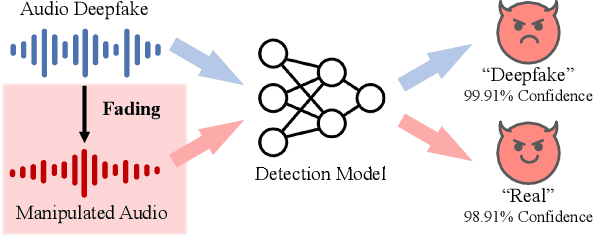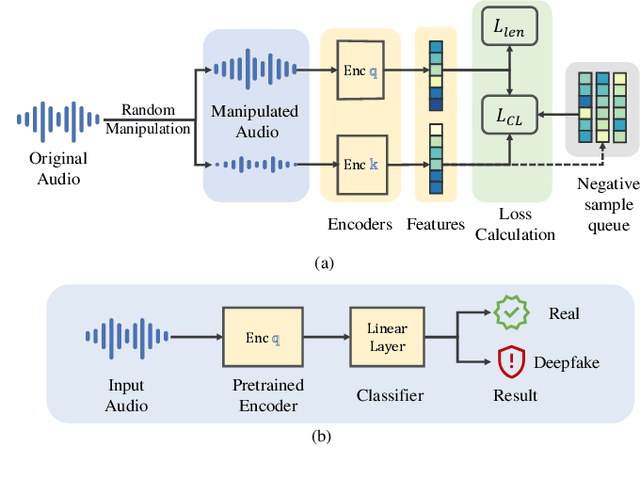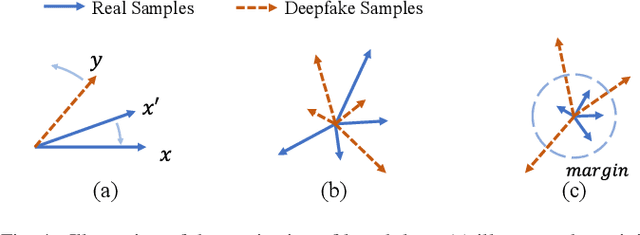Haolin Wu
Exploiting Vulnerabilities in Speech Translation Systems through Targeted Adversarial Attacks
Mar 05, 2025Abstract:As speech translation (ST) systems become increasingly prevalent, understanding their vulnerabilities is crucial for ensuring robust and reliable communication. However, limited work has explored this issue in depth. This paper explores methods of compromising these systems through imperceptible audio manipulations. Specifically, we present two innovative approaches: (1) the injection of perturbation into source audio, and (2) the generation of adversarial music designed to guide targeted translation, while also conducting more practical over-the-air attacks in the physical world. Our experiments reveal that carefully crafted audio perturbations can mislead translation models to produce targeted, harmful outputs, while adversarial music achieve this goal more covertly, exploiting the natural imperceptibility of music. These attacks prove effective across multiple languages and translation models, highlighting a systemic vulnerability in current ST architectures. The implications of this research extend beyond immediate security concerns, shedding light on the interpretability and robustness of neural speech processing systems. Our findings underscore the need for advanced defense mechanisms and more resilient architectures in the realm of audio systems. More details and samples can be found at https://adv-st.github.io.
DPD-NeuralEngine: A 22-nm 6.6-TOPS/W/mm$^2$ Recurrent Neural Network Accelerator for Wideband Power Amplifier Digital Pre-Distortion
Oct 15, 2024



Abstract:The increasing adoption of Deep Neural Network (DNN)-based Digital Pre-distortion (DPD) in modern communication systems necessitates efficient hardware implementations. This paper presents DPD-NeuralEngine, an ultra-fast, tiny-area, and power-efficient DPD accelerator based on a Gated Recurrent Unit (GRU) neural network (NN). Leveraging a co-designed software and hardware approach, our 22 nm CMOS implementation operates at 2 GHz, capable of processing I/Q signals up to 250 MSps. Experimental results demonstrate a throughput of 256.5 GOPS and power efficiency of 1.32 TOPS/W with DPD linearization performance measured in Adjacent Channel Power Ratio (ACPR) of -45.3 dBc and Error Vector Magnitude (EVM) of -39.8 dB. To our knowledge, this work represents the first AI-based DPD application-specific integrated circuit (ASIC) accelerator, achieving a power-area efficiency (PAE) of 6.6 TOPS/W/mm$^2$.
CLAD: Robust Audio Deepfake Detection Against Manipulation Attacks with Contrastive Learning
Apr 24, 2024



Abstract:The increasing prevalence of audio deepfakes poses significant security threats, necessitating robust detection methods. While existing detection systems exhibit promise, their robustness against malicious audio manipulations remains underexplored. To bridge the gap, we undertake the first comprehensive study of the susceptibility of the most widely adopted audio deepfake detectors to manipulation attacks. Surprisingly, even manipulations like volume control can significantly bypass detection without affecting human perception. To address this, we propose CLAD (Contrastive Learning-based Audio deepfake Detector) to enhance the robustness against manipulation attacks. The key idea is to incorporate contrastive learning to minimize the variations introduced by manipulations, therefore enhancing detection robustness. Additionally, we incorporate a length loss, aiming to improve the detection accuracy by clustering real audios more closely in the feature space. We comprehensively evaluated the most widely adopted audio deepfake detection models and our proposed CLAD against various manipulation attacks. The detection models exhibited vulnerabilities, with FAR rising to 36.69%, 31.23%, and 51.28% under volume control, fading, and noise injection, respectively. CLAD enhanced robustness, reducing the FAR to 0.81% under noise injection and consistently maintaining an FAR below 1.63% across all tests. Our source code and documentation are available in the artifact repository (https://github.com/CLAD23/CLAD).
 Add to Chrome
Add to Chrome Add to Firefox
Add to Firefox Add to Edge
Add to Edge